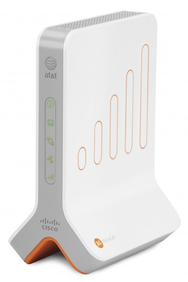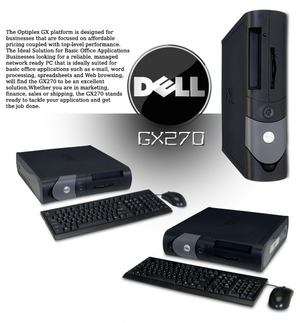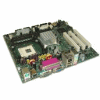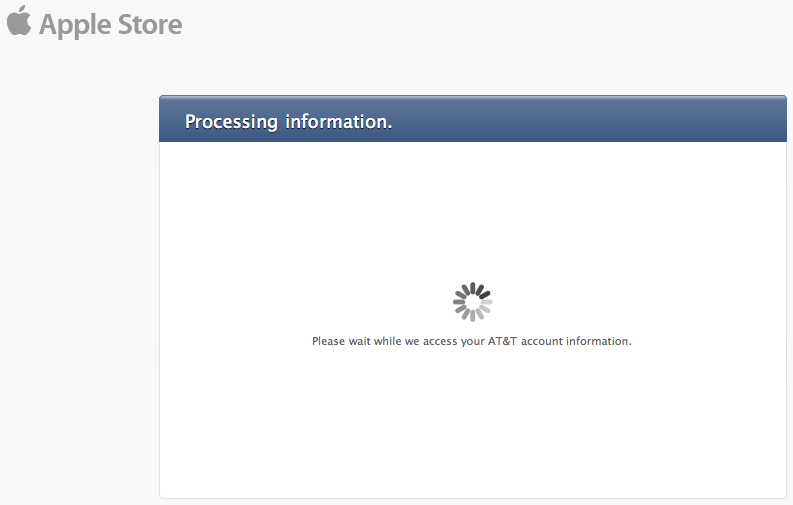AT&T Finally Does Something Right
 Monday, July 12, 2010 at 3:02PM
Monday, July 12, 2010 at 3:02PM  A few days ago I received a letter from AT&T Wireless. It looked like just another piece of junk mail. I knew it wasn't a bill because I've used paperless billing for over a year, so it sat on the kitchen counter with the rest of the bulk mail. Yesterday, I decided the pile had gotten big enough so I started going through it. I went through my usual routine of open; confirm junk status then circular file. When I opened the one from my beloved wireless provider I was pleased to learn they'd chosen me for a free MicroCell because of my status as a real sucker...ahem...“preferred customer”. Months ago I tried to buy one of these devices to boost my terrible cell signal inside my home. At that time, AT&T didn't offer the service in my area so I checked the obligatory “inform me when MicroCell service is available” checkbox, expecting to never hear from them (after two years, I'm still waiting on FIOS also). I don't know if that checkbox had anything to do with them selecting me, but I really couldn't care less. It probably has more to do with me forking over more than $200 every month for my family plan. AT&T probably wants to keep us idiots “loyal customers” happy.
A few days ago I received a letter from AT&T Wireless. It looked like just another piece of junk mail. I knew it wasn't a bill because I've used paperless billing for over a year, so it sat on the kitchen counter with the rest of the bulk mail. Yesterday, I decided the pile had gotten big enough so I started going through it. I went through my usual routine of open; confirm junk status then circular file. When I opened the one from my beloved wireless provider I was pleased to learn they'd chosen me for a free MicroCell because of my status as a real sucker...ahem...“preferred customer”. Months ago I tried to buy one of these devices to boost my terrible cell signal inside my home. At that time, AT&T didn't offer the service in my area so I checked the obligatory “inform me when MicroCell service is available” checkbox, expecting to never hear from them (after two years, I'm still waiting on FIOS also). I don't know if that checkbox had anything to do with them selecting me, but I really couldn't care less. It probably has more to do with me forking over more than $200 every month for my family plan. AT&T probably wants to keep us idiots “loyal customers” happy.
This morning I took the letter to my local AT&T Wireless store and five minutes later, walked out with my FREE MicroCell. The dizzy bimbo courteous sales associate at the store couldn't tell me why I was selected but did say the devices were selling like nickel beer at $150 a throw and I was getting the last one they had in stock. My luck is rarely that good.
Back at the ranch, setting up the oddly shaped device was a snap. AT&T provides a friendly web site for registering the MicroCell's serial number and in a couple of minutes I was ready to plug in and hook up. On the site, I logged in with my wireless credentials and it automatically listed the three wireless numbers in my family plan that would be allowed to connect to my MicroCell. I added the numbers of my daughter and a couple of friends not on my plan and AT&T didn't seem to object. The only stipulation I could find: only AT&T wireless customers allowed. Makes sense.
Hooking up was a snap. I plugged one end of the provided Cat5 patch cable into the MicroCell's ethernet port and the other into my office switch, hooked up the power and lights started blinking just like the “Getting Started” manual said they would. The manual also said the device could take as much as 90 minutes to configure itself, but after about 10, I was up and running. Now I have five bars of signal strength all throughout my three-story home and the signal is still good (3 or 4) at my next-door neighbors'. I've only been up and running for a few hours, but the call quality is excellent and none have dropped so far.
My cable company provides a fairly good broadband connection, (6 Mb down, 700 Kb up) and my house is wired with Cat5e with two wireless access points. I turned off wi-fi on my iPhone 4 and ran a few speed tests through the MicroCell. Several test results with three different iPhone apps yielded a consistent 1.5 – 2 Mb down, but the upstream was a pathetic 50-70 Kb. Latency was also a bit high at around 200 – 300 ms., but with my good wi-fi coverage, data through the MicroCell is a bit redundant. I was just curious.
What I wanted from AT&T was a good cell signal for making calls and sending text messages. As far as I can tell, the MicroCell delivers.
Why What’s Happening to Dell Won’t Happen to Apple
 Wednesday, July 7, 2010 at 1:41PM
Wednesday, July 7, 2010 at 1:41PM  Businesses bought these in drovesIt's been nearly five years since Dell built the last Optiplex GX-270. Five years since the last of the substandard batch(es) of capacitors made their way into the motherboards of one of the most popular business platforms produced to date. That it has taken this long for Dell's mistake to come to light speaks volumes about their efforts to sweep the issue under the rug. Considering they made 11 million faulty Optiplex machines, Dell must have found a huge rug and used a very big broom! If even half of recent allegations are true, their moxie is only exceeded by their deviousness.
Businesses bought these in drovesIt's been nearly five years since Dell built the last Optiplex GX-270. Five years since the last of the substandard batch(es) of capacitors made their way into the motherboards of one of the most popular business platforms produced to date. That it has taken this long for Dell's mistake to come to light speaks volumes about their efforts to sweep the issue under the rug. Considering they made 11 million faulty Optiplex machines, Dell must have found a huge rug and used a very big broom! If even half of recent allegations are true, their moxie is only exceeded by their deviousness.
The MacTexan Podcast #1 is Up!
 Wednesday, June 30, 2010 at 10:56AM
Wednesday, June 30, 2010 at 10:56AM  Get in on the beginning! The first episode of the MacTexan Podcast has been published. You can get it here. The feed has been submitted to iTunes and should be available soon. Until then you can subscribe manually. Copy this link:
Get in on the beginning! The first episode of the MacTexan Podcast has been published. You can get it here. The feed has been submitted to iTunes and should be available soon. Until then you can subscribe manually. Copy this link:
http://www.mactexan.com/podcast/rss.xml
In iTunes, click <Advanced><Subscribe to Podcast...>and paste the link into the URL window like this and click OK:
UPDATE: We're now listed in the iTunes Store. The fastest way to find us is to search the iTunes store for "mactexan". Our podcast is the only result. Or click here. (link opens iTunes)
Enjoy!
Joe
 MacTexan Podcast in
MacTexan Podcast in  media,
media,  news,
news,  podcast
podcast AT&T = FAIL! (Again)
 Tuesday, June 15, 2010 at 3:16PM
Tuesday, June 15, 2010 at 3:16PM I've been trying to pre-order an iPhone 4 since 8 this morning. This is all I see before Apple's site times out.

WTF? You'd think the idiots would have learned by now!




